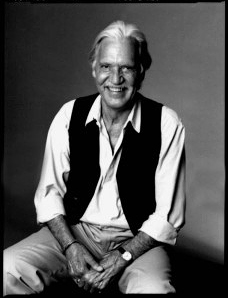Paper, Polo, Rock and Ruin
By Megan McKinney
Part Four: The Butler Heirs Midcentury: Michael
Nobody plunged into the glamour and excesses of midcentury America with greater gusto than Michael Butler. He participated whole-heartedly in the era’s International Jet Set, whose members traveled from sipping champagne on El Morocco’s zebra-striped banquettes and dancing the Twist at the Peppermint Lounge or London’s Annabel’s, to skiing on the slopes at St. Moritz, gambling at the tables in Monte Carlo, cruising the Mediterranean on their private yachts and hobnobbing with Aristotle Onassis, Stavros Niarchos and Prince Aly Khan. In an era when society figures, rather than urban divas and red carpet starlets, were the “celebs,” New York’s seven daily newspapers featured multiple columns devoted to jet setters and their activities.
Always, presiding over the festivities were the Duke and Duchess of Windsor, who soon enveloped Michael within their inner circle. It began when Michael, staying in the Paris home of international playboy Porfirio Rubirosa, was telephoned one morning by Long Island socialite C. Z. Guest, also visiting Paris. She explained that her husband, Winston, had gone off to Israel to intercept his “crazy mother,” the Hon. Mrs. Frederick Guest. It seems the fabulously wealthy former Amy Phipps, daughter of Andrew Carnegie’s partner, wanted to use Guest Airlines to ship Jews back to Israel. C. Z. had been invited to the Duke and Duchess of Windsor’s elegant house in the Bois de Boulogne for dinner and–temporarily without her husband–wanted Michael to escort her.
Both Windsors were enchanted with Michael and followed by making him their increasingly frequent companion. He traveled with them on the SS America from Le Havre to New York, where the trio was joined by another mid-century Jet Set regular, the portly party-giving Elsa Maxwell, all of which elevated Michael’s media visibility. Soon Igor Cassini, as Cholly Knickerbocker, and other New York columnists were regularly describing Michael as the Duke and Duchess’ latest favorite and following his activities on a daily basis.
In November 1955, both Michael and Mrs. Guest were invited to an infamous Long Island dinner party given by Mrs. George F. Baker in honor of the Windsors. During the hours that followed the party, one of those attending, William Woodward, Jr., was shot and killed by his wife, the former Ann Eden Crowell. The incident, well publicized at the time, entered the popular culture when Truman Capote revealed Ann Woodward’s murder motive in his book, Answered Prayers. She committed suicide almost immediately and the entire drama, including Mrs. Woodward’s sudden death and Truman Capote’s role in it, became the basis for Dominick Dunne’s best-selling novel The Two Mrs. Grenvilles. Michael Butler and C. Z. Guest, with whom he was taking an after dinner stroll when the Woodwards were leaving the party, were the last two people–aside from Ann Woodward–to see Billy Woodward alive.
Long before he produced Hair, Michael became involved in three Broadway productions, The Golden Apple, West Side Story and Ondine, the breakout Broadway vehicle for Audrey Hepburn, who was then living with Michael. During his theatrical initiation years of the early 1950’s, Michael’s mentor and frequent companion was film director Edmund Goulding. Through Goulding, he met Greta Garbo, with whom he became a great chum, and has told of spending hours in the reclusive film icon’s Manhattan kitchen.
To put this in perspective: in a city of the rich, famous, powerful and notorious, Greta Garbo was New York’s most intriguing midcentury superstar. Like Jacqueline Kennedy Onassis after her, she roamed the streets of Manhattan wrapped in an aura of remoteness and mystery, always wearing dark glasses, trousers and a large floppy-brimmed hat. There was no one who was too sophisticated not to stop and stare and nobody so presumptuous as to intrude on her privacy. The mere spotting of the great star wandering through her rounds on the Upper East Side was a trophy, to the extent that the most In experience one could possibly have, according to the first In and Out book, was to glimpse Greta Garbo in the old Bloomingdale’s basement.
Beyond simply seeing the city’s most legendary figure was the mystique of where she lived. It was an apartment about which much was whispered, rumored and even written, but it was visited by few. In 1953, Garbo settled into a fifth-floor, seven-room flat overlooking the East River at 450 East 52nd Street. She lived there until her death in April 1990, reportedly engaged in an extended ménage à trois with her ninth floor neighbors, her cccccc
The apartment was enriched through the tastes of dear friends Cecil Beaton, Gayelord Hauser and Billy Baldwin. Furnished in fine French antiques, predominantly of the Regence period, the living room was decorated in pink, salmon and mossy green. The curious might learn through careful study of the society pages and gossip columns that the legendary space featured curtains of 18th century silk, an exquisite Savonnerie rug and a collection of French Impressionistic paintings, along with a smattering of Modern art—but they knew little more than that and there was never photography. Therefore, to become an intimate of the elusive Garbo, “spending hours” in her kitchen was indeed a rare accomplishment and a testament to Michael’s considerable charm.
The Butlers of Oak Brook: Paper, Polo, Rock and Ruin, Megan McKinney’s series of eight articles on this remarkable dynasty, will continue in Classic Chicago over the next several weeks.
Next Sunday: Politics and “Hair”
Author Photo:
Robert F. Carl









